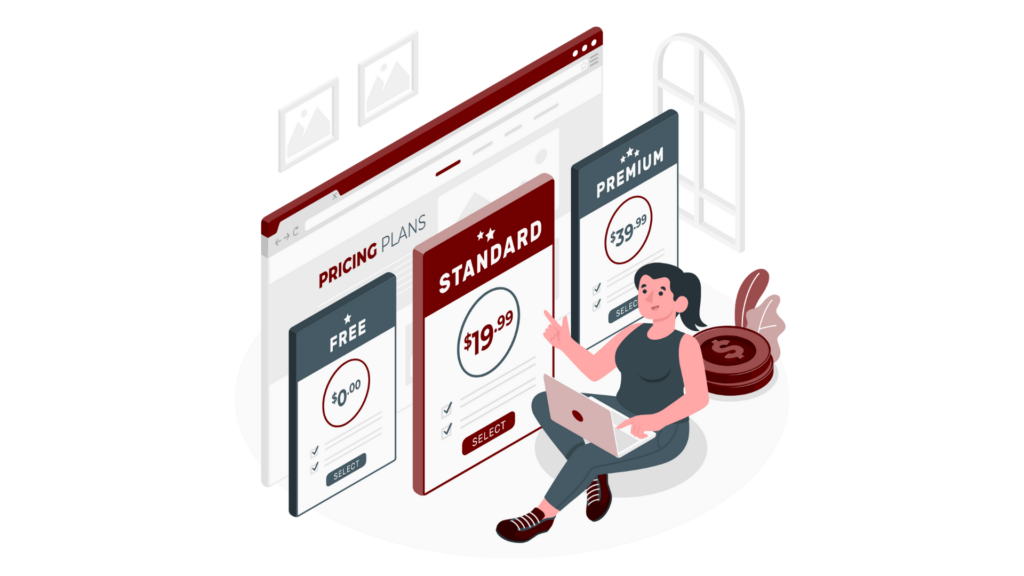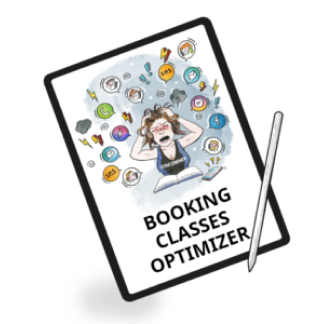In the ever-competitive fitness industry, attracting and retaining gym members depends on a well-defined pricing strategy. This requires a good understanding of it. In 2024, gym owners and managers must adapt to new trends and technologies to attract and retain members.
Competitive pricing is not just about undercutting rivals, but also offering value that meets the diverse needs of fitness enthusiasts. This article will give you the knowledge and tools you need to develop a competitive pricing strategy for your gym in 2024. We will review 20 practical tips on how to optimize your gym’s pricing structure, as well as learn about the average cost of a gym membership.
Developing an effective pricing strategy is critical to the success of any fitness business. You can achieve this by using gym management software, which plays a key role in optimizing pricing models. Such fitness studio management software provides valuable insight into member behavior, preferences and financial transactions, enabling data-driven decisions that improve the overall pricing strategy.

Be ready to act – check out our 20 actionable tips for developing a robust pricing strategy for gyms in 2024, along with insights on average gym pricing in the United States. Use these strategies and understand the market trends, and as a gym owner, you’ll make sure your competitors are left behind in this dynamic market.
Understanding gym pricing strategy
There are several pricing strategies that can be used for gyms. However, before we get to them, it is important to know what each cost depends on. By focusing on these key factors, gym owners and managers can develop a comprehensive and effective pricing strategy that will attract and retain members while ensuring financial stability.

Key factors in determining a gym’s pricing strategy:
- Market research and analysis of potential customers, understanding the target audience.
- Research the prices and offers of competitors in the area.
- Tailor membership options to different segments (e.g., students, professionals, families).
- Calculating fixed and variable costs (rent, equipment, staff salaries, utilities).
- Develop different membership levels to meet budgets.
- Different forms (monthly, quarterly, annual plans).
- Offer different types of memberships (basic, premium, family, corporate).
- Building trust, openness, communicating all costs and terms of agreement.
- Regularly review competition and adjust prices.
12 best gym pricing strategies
An effective gym pricing strategy is a comprehensive plan that defines how a gym prices memberships and services to attract and retain customers, cover operating costs and maximize profitability. The strategy is multi-faceted and takes into account various factors such as market conditions, competition, target demographics and the gym’s unique value proposition.

Implementing a well-thought-out pricing strategy ensures that the gym remains competitive while delivering value to its members.
What you should know about the fitness business?
The global fitness industry was valued at about $94 billion in 2021 and is projected to reach more than $105 billion by 2024, at a compound annual growth rate (CAGR) of 7.7%.
The global fitness industry is projected to reach $6 billion by 2024, reflecting a constant annual growth rate.
1. Monthly gym membership pricing model
The monthly gym membership pricing model is a subscription-based fee structure where members pay a fixed amount each month for access to gym facilities and services. It provides predictable revenue for the gym and flexible payments. The model offers flexibility to members, allowing them to manage their budgets through predictable, regular payments, and typically includes different levels of membership to meet different needs and preferences.

2. Pay-as-You-Go pricing gym membership
Catering to the rise of casual gym users, offering pay-per-class or day-pass options can attract those who don’t require a full membership.

The Pay-as-You-Go pass is a pricing model in which members pay only for the services they use, such as individual classes or day passes, instead of a fixed monthly fee. This model appeals to those who are willing to pay per visit, offering flexibility without long-term commitments. This helps the gym cover its operating costs while attracting a wider audience who may not want a traditional monthly membership.
3. Bundling pricing model
The package pricing model for gym memberships combines multiple services or products into a single package for a single price. This can include gym access, group exercise classes, personal training and additional amenities. Packages often offer a discount compared to purchasing each service separately, providing members with greater value while helping the gym increase revenue and cover operating costs.

4. Dynamic pricing model
The dynamic gym pricing model adjusts the prices of memberships and services based on real-time demand, usage patterns and other factors. Prices can change during peak hours, for special classes or services with limited availability. The model maximizes revenue by charging higher prices when demand is high and offering discounts during off-peak hours when the fitness club niche needs to be filled, helping to offset operating costs and attract different customer segments.
5. Value-Based pricing model
Consumers are increasingly looking for value beyond just gym access. Highlighting amenities, class offerings, and expert trainers can justify higher pricing structures.

The value-based pricing model for gym memberships sets prices based on the perceived value and benefits to the customer, rather than solely on cost. This approach takes into account factors such as unique amenities, personalized services and the overall member experience. By aligning prices with the value delivered, gyms can justify higher fees and attract members who prioritize quality and exclusive offerings, helping to cover operating costs and increase profitability.
6. Tiered membership pricing model
Offering a variety of membership tiers caters to diverse needs and budgets. Basic, mid-range, and premium options with varying access levels provide flexibility for potential members.

A tiered membership pricing model offers multiple membership levels, each with different benefits and price points. For example, a basic tier might provide access to cardio equipment, while higher tiers offer unlimited access to all facilities, personal trainers, and additional amenities. This model helps cover operational costs by catering to diverse customer needs and budgets, promoting customer loyalty through flexible options.
8. Family or group pricing model
A family or group pricing model offers discounted rates for multiple members from the same household or group. This model provides unlimited access to facilities, including cardio equipment and personal trainers, at a reduced collective price. It helps cover operational costs by increasing membership numbers and fosters customer loyalty by making gym access more affordable for families and groups.

9. Corporate membership model
Model członkostwa korporacyjnego zapewnia zniżki na członkostwo w siłowni pracownikom współpracujących firm. Pomaga to siłowniom pokryć koszty operacyjne poprzez zapewnienie członkostwa masowego i zwiększa lojalność klientów poprzez budowanie długoterminowych relacji z firmami.
10. Session-Based pricing model
The session-based pricing model involves charging clients a fixed rate for each training session. This model is common in personal training, where each session typically ranges from 30 minutes to an hour. The cost can vary based on the trainer’s experience, the training location, and the session’s length. This model allows flexibility for clients to pay as they go rather than committing to a long-term package.

11. Annual memberships model
The annual memberships model involves clients paying a lump sum upfront for a year’s access to services, often at a discounted rate compared to monthly or session-based fees. This model is common in gyms and fitness clubs, offering clients ongoing access to facilities and, in some cases, to personal trainers. It provides a steady income for the service provider and encourages longer-term commitment from clients.
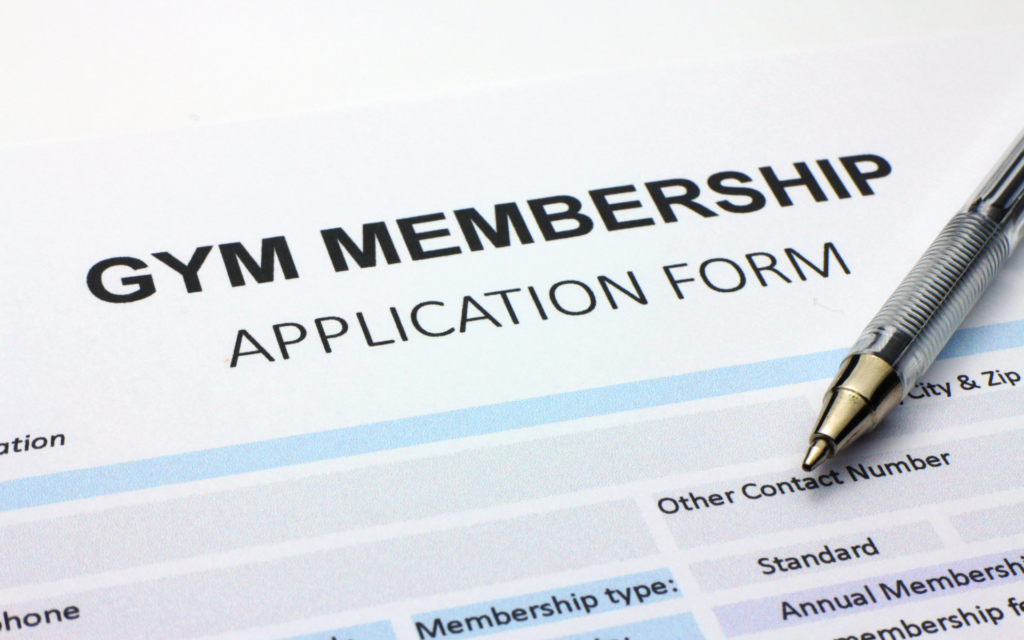
12. Off peak membership rate mode
The off-peak membership rate model offers discounted rates for accessing services during non-peak hours. Common in gyms and fitness centers, this model encourages usage during times of lower demand, typically early mornings, mid-afternoons, or late evenings.

Average gym prices in 2024
Understanding the cost of a gym membership is crucial to making informed choices. In this section, we will analyze average gym prices in 2024, examining different pricing models, regional differences and even seasonal trends.

As fitness trends have evolved and consumer preferences have changed, the structure of gym fees has adapted, presenting a range of pricing models to suit every budget and lifestyle.
What you should know?
National averages can range from $30 to $100+ per month depending on location, amenities, and services offered.
National average of different gym pricing models
The national average cost of a gym membership varies widely depending on the type of pricing model used. We analyzed which pricing strategies the most popular gyms in the US have. Each model caters to different users’ needs, influencing how they choose a gym based on financial preferences and schedule.
You can take inspiration from how the big companies do it, or go your own way!
Table: Average Gym Prices in the US
| Gym Name | Price Model | Average Monthly Price ($) | Source |
|---|---|---|---|
| Planet Fitness | Basic Membership | 10 | Planet Fitness Website |
| Black Card Membership | 22 | ||
| Anytime Fitness | Standard Membership | 30 – 50 | Anytime Fitness Website |
| LA Fitness | Single Club Membership | 30 – 35 | LA Fitness Website |
| Multi Club Membership | 35 – 45 | ||
| 24 Hour Fitness | Basic Membership | 30 – 40 | 24 Hour Fitness Website |
| Premium Membership | 40 – 60 | ||
| Gold’s Gym | Basic Membership | 20 – 30 | Gold’s Gym Website |
| Premium Membership | 30 – 45 | ||
| Equinox | Standard Membership | 150 – 200 | Equinox Website |
| All-Access Membership | 200 – 300 | ||
| Crunch Fitness | Base Membership | 10 | Crunch Fitness Website |
| Peak Membership | 20 – 30 | ||
| YMCA | Individual Membership | 40 – 55 | YMCA Website |
| Family Membership | 55 – 70 | ||
| Lifetime Fitness | Standard Membership | 60 – 100 | Lifetime Fitness Website |
| Premier Membership | 100 – 170 | ||
| Blink Fitness | Green Membership | 15 | Blink Fitness Website |
| Blue Membership | 20 | ||
| OrangeTheory | Basic Package (8 classes) | 59 | OrangeTheory Website |
| Elite Package (12 classes) | 99 | ||
| Premier Package (Unlimited) | 159 | ||
| SoulCycle | Single Class | 34 – 40 per class | SoulCycle Website |
| CrossFit Gyms | Unlimited Membership | 100 – 200 | CrossFit Gym Websites (various) |
| Curves | Standard Membership | 30 – 50 | Curves Website |
| Snap Fitness | Standard Membership | 30 – 40 | Snap Fitness Website |
| The Edge Fitness | Basic Membership | 10 | The Edge Fitness Website |
| Total Membership | 20 | ||
| Fitness 19 | Standard Membership | 9 – 19 | Fitness 19 Website |
| Pure Barre | Unlimited Membership | 99 – 179 | Pure Barre Website |
| Barry’s Bootcamp | Single Class | 30 – 38 per class | Barry’s Bootcamp Website |
| F45 Training | Unlimited Membership | 65 – 150 | F45 Training Website |
Price comparison by region – table
Gym membership costs can also vary widely by region, reflecting economic conditions, cost of living and the competitive landscape in different areas of the United States. The table below shows average gym pass prices in several key regions, providing insight into how geographic factors affect gym prices.
| Type of Gym | Gym Name | Type of Membership | Location | Average Monthly Cost ($) |
|---|---|---|---|---|
| Boutique | OrangeTheory | Basic Package (8 classes) | South | 59 – 79 |
| Elite Package (12 classes) | Midwest | 99 – 119 | ||
| Premier Package (Unlimited) | West Coast | 159 – 179 | ||
| Boutique | SoulCycle | Single Class | Northeast | 34 – 40 per class |
| Boutique | Pure Barre | Unlimited Membership | East Coast | 99 – 179 |
| Boutique | Barry’s Bootcamp | Single Class | West Coast | 30 – 38 per class |
| Boutique | F45 Training | Unlimited Membership | Northeast | 130 – 150 |
| Budget | Planet Fitness | Basic Membership | Northeast | 10 – 15 |
| Black Card Membership | Midwest | 20 – 25 | ||
| Budget | Crunch Fitness | Base Membership | South | 15 – 20 |
| Peak Membership | Midwest | 25 – 30 | ||
| Budget | Blink Fitness | Green Membership | Northeast | 15 – 20 |
| Blue Membership | East Coast | 20 – 25 | ||
| Budget | The Edge Fitness | Basic Membership | Northeast | 10 – 15 |
| Total Membership | Northeast | 20 – 25 | ||
| Budget | Fitness 19 | Standard Membership | West Coast | 9 – 19 |
| Community | YMCA | Individual Membership | Nationwide | 40 – 55 |
| Family Membership | Nationwide | 55 – 75 | ||
| Full-Service | Lifetime Fitness | Standard Membership | Midwest | 80 – 100 |
| Premier Membership | West Coast | 100 – 150 | ||
| Full-Service | LA Fitness | Single Club Membership | West Coast | 35 – 45 |
| Multi Club Membership | Northeast | 45 – 55 | ||
| Premium | Equinox | Standard Membership | Northeast | 180 – 200 |
| All-Access Membership | West Coast | 200 – 250 | ||
| Specialty | Gold’s Gym | Basic Membership | South | 20 – 30 |
| Premium Membership | East Coast | 30 – 40 | ||
| Specialty | CrossFit Gyms | Unlimited Membership | Nationwide | 150 – 200 |
| 24-Hour | 24 Hour Fitness | Basic Membership | Southwest | 35 – 45 |
| Premium Membership | Pacific Northwest | 50 – 60 | ||
| 24-Hour | Anytime Fitness | Standard Membership | West Coast | 40 – 50 |
| Standard Membership | Southeast | 30 – 40 | ||
| 24-Hour | Snap Fitness | Standard Membership | Midwest | 30 – 40 |
| Women’s Only | Curves | Standard Membership | South | 30 – 40 |
Seasonal pricing trends
Seasonal trends also play a key role in gym membership pricing. Many gyms offer promotional rates at the beginning of the year to attract new members who are making New Year’s resolutions. Summer promotions can also be common, as gyms try to boost attendance during the usually slower months.
An understanding of these trends can help consumers make informed decisions about purchasing a gym pass at the best possible price.

20 Tips for Gym Pricing Strategy in 2024
The fitness industry is highly competitive, and attracting members depends on a well-defined pricing strategy. That’s why we prepare 20 tips for optimizing your gym pricing strategies in 2024.

1. Conduct market research
Understanding your local market is the foundation of any pricing strategy. Conduct thorough market research to understand your gym’s potential new members. Based on this, assess their income level and gym membership preferences, among other things.

Importantly, analyze your competitors’ pricing and identify potential gaps that you can exploit. This will help you differentiate your offering and attract new customers.
2. Optimize gym pricing using gym management software
Use technology to streamline your pricing strategy. Best gym management software can help you track members’ usage patterns, preferences and financial transactions, allowing you to make data-driven pricing decisions.
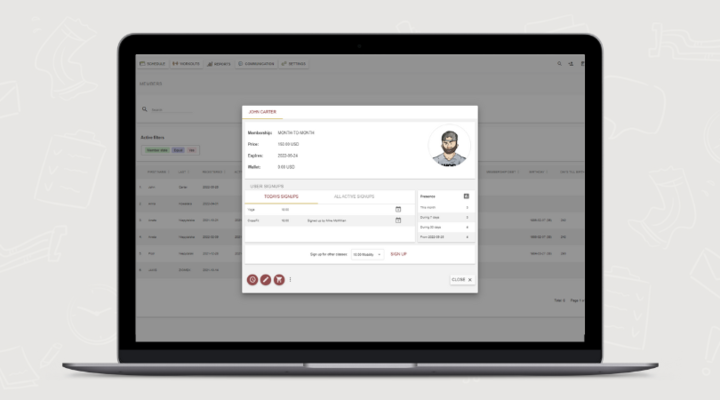
Don’t just rely on gut instinct. Leverage gym or best yoga studio software to analyze membership trends and usage patterns. Optimize pricing based on data-driven insights.
3. Offer tiered membership levels
Offer different levels of membership with different price points. Meet diverse needs with basic, mid-level and premium options with different levels of access to equipment, classes and amenities.

Offer basic, premium and VIP packages with different levels of access to equipment, classes and amenities. Using the user data you gain from your best gym management software, find out which members are most active. Then you can offer them a special pricing strategy.
4. Introduce flexible payment options
Flexibility is key to attracting a wider range of gym members. Offer monthly, quarterly and annual payment plans, as well as payment options on an ongoing basis. This flexibility can be tailored to different financial situations and commitment levels.

Provide flexibility with contract options, but also provide customers, with a gym management system:
- online payment for passes,
- simple reminders when the end of a pass is approaching,
- easy payment system.
Attract customers fearful of commitment with monthly plans while providing recurring revenue through contracts.
5. Provide value-added services
Expand your membership packages to include additional services such as personal training, nutritional counseling and wellness workshops. These value-added services can justify higher prices and attract members seeking comprehensive fitness solutions.

By conducting, among other things, online class sign-ups, or the option to sign up for a reserve list for classes, you will gain members’ trust. You’ll make them more satisfied and feel taken care of with these additional options.
6. Implement dynamic pricing
Dynamic pricing adjusts membership costs based on demand, time of day or season. For example, you can offer discounts during off-peak hours or raise prices during periods of high demand. This approach maximizes revenue while taking into account member preferences.

7. Utilize promotional offers
Attract new members and retain current members with promotional offers. Time-limited discounts, referral bonuses and holiday promotions can encourage sign-ups and renewals.

Using a gym management system, you can also send promotional coupons or discount information to your existing customers. By doing so, you will increase their commitment and desire to belong to your club.
8. Encourage long-term commitments with discounts
Encouraging long-term commitments with discounts is beneficial because it enhances member retention and stabilizes revenue. By offering incentives for extended memberships, gyms can secure upfront payments and reduce turnover, which is crucial for financial planning and resource allocation.
Get free ebook to optimize your classes booking and conducting market research
Boost retention and gym revenue with long-term discounts:
- Win-Win: Gyms benefit from predictable recurring income, while members enjoy significant savings.
- Software streamlines process: Gym management software simplifies offering tiered memberships with discounts for longer commitments.
- Automates tasks: Free up staff time for member engagement by automating billing and communication.
9. Leverage data analytics
Leveraging data analytics through sports facility management software allows gym owners and managers to make informed decisions based on:
- member behavior,
- preferences,
- trends.
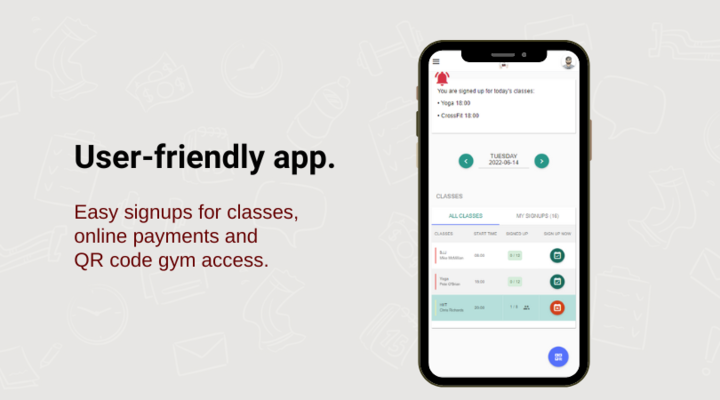
Why should you choose WodGuru as gym management software?
Think of the price! WodGuru cost is always the same.
It’s just 1 $ per member, max 119 $, it will never be more!
This insight enables the optimization of marketing strategies, gym check-in system, class schedules, and resource allocation to improve member satisfaction and retention. Additionally, data analytics help identify patterns that can guide pricing adjustments, promotional offers, and facility improvements, ultimately driving growth and enhancing operational efficiency.
10. Monitor competitor pricing
How to get the right gym pricing strategy? Monitor your competitors pricing, and get the best membership fees according to your business pricing strategy.

Stay ahead of the curve: monitor competitor pricing!
- Know your market value: analyze competitor pricing to ensure your gym offerings are competitively priced.
- Spot pricing trends: identify potential pricing changes in the market and adjust your strategy accordingly.
- Attract new members: offer compelling deals based on competitor pricing insights.
11. Emphasize unique selling points
Highlighting unique selling points is crucial because it differentiates a company from its competitors, attracting and retaining customers. It allows you to highlight distinctive features or benefits that are not readily available elsewhere. This strategy increases brand recognition and loyalty by focusing on what makes a product or service unique, justifying consumer choice in a crowded marketplace.
12. Create referral programs
Creating referral programs with gym or pilates studio software is strategic because it uses the power of word of mouth to attract new members while rewarding current members. This approach not only increases membership through trusted referrals, but also increases member engagement and loyalty. This streamlined process encourages more active participation, which can lead to significant membership growth and retention.

13. Utilize online and offline marketing
Leveraging both online and offline marketing is essential to increasing a gym’s reach and customer satisfaction. This dual approach allows you to reach more potential members, adjust membership prices and refine your gym’s strategy to optimize revenue generation.

Online and offline strategies you should know:
- Reach a wider audience: Cast a wider net by using both online channels (social media, targeted ads) and offline methods (flyers, local partnerships) to attract new members.
- Optimize membership prices: Effective marketing helps justify membership prices by showcasing the value your gym offers.
- Craft a winning strategy: A well-rounded online and offline marketing strategy maximizes member acquisition and retention, leading to steady revenue generation.
- Boost customer satisfaction: By promoting your gym’s offerings and fostering community engagement, you build a satisfied customer base that keeps coming back for more.
14. Regularly review and adjust prices
Regularly reviewing and adjusting membership fees is key to aligning a gym pricing strategy with market conditions and member expectations. This practice helps optimize the number of members attracted and retained, which is critical to revenue generation. Adjusting prices based on competitive analysis, cost-of-living changes and member feedback can increase customer satisfaction by offering value that resonates with members’ current needs and expectations.
15. Incorporate feedback from members
Taking members’ opinions into account is crucial, as it directly affects customer satisfaction and retention by making them feel valued and listened to. This practice allows gyms to adjust services and facilities to better meet the needs and preferences of their customers, fostering a sense of community and loyalty. To capitalize on feedback, among other things, you can take advantage of the opportunities provided by gym management software!

16. Offer free trials or limited-time offers
Offering free trials or limited-time offers is an effective strategy for attracting new gym members by reducing their initial risk and investment. These promotions allow people to experience the gym’s services and atmosphere firsthand, which can lead to increased enrollment and customer loyalty. This approach also generates immediate interest.
17. Use psychological pricing
Using psychological pricing, such as ending gym membership prices at “.99” or offering tiered pricing with a clear “best value” option, leverages consumer behavior and perception to increase sales. This subtle pricing technique can significantly affect how customers perceive value, increasing both customer acquisition and retention.

These gym pricing strategies make that monthly fee seem more attractive or offers appear more valuable, influencing purchasing decisions. Clients become more willing to pay. By creating the illusion of savings or emphasizing additional benefits at a slightly higher cost, gyms can effectively induce potential members to make choices that increase revenue and member engagement.
18. Bundle services and products
Bundling services and products as a strategy for your gym is effective for enhancing customer value and generating revenue. By offering combined packages of services like unlimited access, classes, personal training sessions, and wellness products at a single, reduced price, fitness club can create compelling offers that encourage higher spending and longer-term commitments from members.
This approach simplifies the purchasing process, increases customer satisfaction by providing comprehensive solutions, and boosts overall sales through cross-promotion of complementary services and products.

19. Ensure transparency in pricing
Ensuring transparency in pricing thanks to gym billing and payment software is essential as it builds trust target audience and credibility with customers, crucial factors for long-term price point business success. Transparent pricing prevents hidden costs and surprises that can lead to dissatisfaction and churn.
By clearly communicating what members are paying for, gyms can foster a positive relationship, encouraging loyalty and referrals, which are vital for sustained revenue growth. This openness not only aligns with ethical business practices but also enhances customer experience and satisfaction.
20. Focus on member retention strategies
Focusing on member retention strategies is crucial because retaining existing members is typically more cost-effective than acquiring new ones. Effective retention boosts long-term revenue stability and enhances community strength within the gym.

Strategies like personalized engagement, regular feedback implementation, and loyalty rewards not only improve member satisfaction but also increase the likelihood of sustained memberships. This focus on keeping current members happy reduces turnover rates, which is essential for maintaining a reliable revenue stream and building a solid reputation.
Key takeaways
- Tailor your pricing models and packages to what resonates most with your ideal gym member.
- Cater to different preferences with options like contract gym membership, pay-as-you-go options, and boutique studio pricing.
- Incentivize members with attractive discounts for signing up for longer contracts, increasing revenue predictability.
- Simplify offering tiered gym membership and automate tasks like billing and communication, freeing up staff for member engagement.
- Employ both online and offline channels to reach a wider audience and generate leads.
FAQ
Should you publish gym prices on your website?
Yes, publishing prices on the website is a valuable solution. Transparent pricing helps potential members understand what to expect before they visit the gym, which can greatly increase trust and credibility.
Displaying prices clearly can also help qualify potential customers, as it ensures that people who contact you or register with your gym online are already aware of the cost and are less likely to cancel. This streamlines the membership set-up process, reduces administrative tasks and can increase conversion rates, allowing potential members to make informed decisions quickly and independently.
What is the 4 pricing strategy?
The 4 pricing strategy, often referred to as the “Four P’s” of pricing, involves a comprehensive approach. These strategies are not mutually exclusive and can be combined or adjusted depending on the company’s market objectives, customer base and competitive environment.
- Penetration pricing: This strategy involves setting a low price for a new product or service to quickly attract customers and establish a presence in the market. The goal is to “penetrate” the market quickly, which can be particularly effective in highly competitive environments.
- Premium pricing: Also known as price skimming, this strategy sets higher prices to reflect the perceived prestige and higher quality of the product or service. It targets consumers who are willing to pay more for premium features, status or brand associations.
- Economic pricing: This strategy aims for the lowest possible cost to attract the most price-sensitive customers. It is often used by large companies that can afford to maintain profit margins through strong sales.
- Price bundling: This involves combining several products or services and offering a bundle at a price that is often lower than if each item were purchased separately. This strategy can encourage sales of products or services that may not sell as well individually and can increase the perceived value to customers.
How to structure gym memberships?
An effective gym membership structure includes offering a variety of options to meet the diverse needs and preferences of the customer base. By carefully considering these elements, you can develop a gym membership structure that will appeal to a wide range of potential customers, increasing both customer acquisition and retention.
You can bet on strategies such as e.g.:
- Offer different membership options based on access times.
- Create different membership levels, such as basic, standard, and premium.
- Provide a mix of contract durations, including month-to-month, quarterly, and annual memberships.
- Offer a trial period or a low-cost introductory membership
- Partner with local businesses to offer discounted rates
Related articles
50 Best Fitness Marketing Strategies (How to Market a Gym in 2024)
50+ Best Gym Marketing Ideas for 2024 (With Examples)
20 Ideas How to Promote a Gym on Social Media (Gym Social Media Marketing)
Boutique Fitness Studio: What It Is & 5 Reasons to Start in 2024
20 Fittest Cities & States in America to Choose Your Gym Location in 2024
20+ Bootcamp Workout Ideas to Attract More Members in 2025
Gym Membership Form Template for 2024 (FREE)
Gym Membership Card Template in 2025 (Free, Downloadable)
How to Create a Gym Referral Program (20 Ideas to Boost Revenue)
Creating a Gym with Childcare: 11 Tips for Success
Gym SWOT Analysis: Benefits and Step-by-Step Guide (2025)
FREE Small Group Training Program Template to Save Your Time
50+ Health Club Marketing Ideas to Boost Your Incomes in 2025

